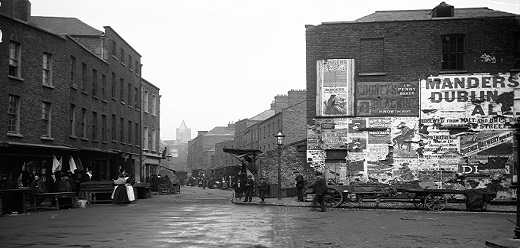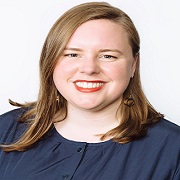
In October 2017, I returned to the UCD School of Art History for a postdoctoral fellowship funded by the Irish Research Council. As well as a return to my ‘alma mater’, this was also a return to academia: after finishing my PhD at Trinity College, I spent two and a half years working at the ESB Centre for the Study of Irish Art at the National Gallery of Ireland. The transition from gallery to university has been undoubtedly eased by also being a Resident Scholar at the UCD Humanities Institute. This collegial working space, shared with a cohort of fellow postdocs, doctoral students, visiting researchers and staff members, provides a crucial research environment, where the rare commodities of space and time are made available. The intellectually stimulating atmosphere of the HI has been further enhanced by the series of seminars and lectures programmed throughout the academic year, showing the importance of humanities research to many contemporary issues, including migration, ethics, and technological development.
As my fellowship focuses solely on research, the chief markers of the end-of-term (the close of the teaching year and summer exams) have, in many ways, been absent from my day-to-day life. In the summer months, the UCD campus seems to noticeably exhale: buildings empty, queues shorten, and emails about seminars, lectures, and workshops lessen. The easing of pace is hard not to notice, and with the nice weather outside lunches and ice-cream breaks have become more frequent! As other contributors to this blog have said, academic summers are filled with conferences, field-work, research, writing, and this has also been the case for me. Since May, I have completed some minor revisions and resubmitted a journal article which will be published in the next few weeks, drafted a book proposal, and continued to work on the introduction and chapter that I will submit with this to publishers at the end of the summer. With colleagues from the SouthHem project in UCD, I also co-organized an enjoyable two-day conference here in the HI. Titled ‘Settler Social Identities: Rational Recreation in the Long Nineteenth Century’, the papers covered diverse topics and geographies, from libraries and reading groups in Ottawa, Irish villages at industrial exhibitions in America, and cultural patronage in nineteenth-century Melbourne. Funded by a grant from the HI and UCD College of Arts and Humanities, this was a wonderful opportunity to exchange ideas with colleagues from across different disciplines. An integral part of academic life is funding applications, and that has been a major part of my summer. There’s also much to look forward to before term resumes, including a visit to Rome for the European Association of Urban History Conference, where I will present part of my research on Walter Osborne’s paintings of Dublin.
For many postdocs and early career researchers, the summer can bring more practical issues to the fore, including managing to pay for rent or childcare while on short-term, fractional, or hourly-paid contracts. As I have found this summer, the Dublin rental market is also an added pressure: moving out of a flat I had lived in for seven years has meant an almost 38% increase in how much I pay in rent each month. With the temporary security of my fellowship (and the fact that I have no dependents) this has been just about manageable, but for many would simply be untenable. A recent UCD alumni letter reminded me that I graduated in 2008 – ‘a difficult time as the recession had just hit’ – and during some of the quieter moments this ‘busy season’, I have been reflecting on what might lie ahead. For me and many of my colleagues, it is often hard to stay positive about working in academia, despite our enthusiasm for our subjects and the productive environment in which we work in here at the HI. Permanent academic jobs are rare, with the bar to entry on an ever-upward trajectory. This is echoed in research or collections-based positions in the cultural sector, where salaries are usually lower to boot. Even on the best research days (and there have been many over the past ten months) the fears that come with precarity needle away, casting a small shadow on completed articles, archival finds, and otherwise engaging discussions with colleagues. I have been heartened by the growing recognition of these difficulties, not least from President Michael D Higgins, who, at the launch of the Cambridge History of Ireland series, called for established academics to show solidarity and advocate for the ‘new precariat’.
Even the briefest glance at the daily news further strengthens my belief in communicating humanities research, which can impart tools and contexts for understanding the contemporary world. To my mind, art history and visual literacy have never been more important: at their core, these subjects seek to ask questions which lead to an understanding of how an artwork (or image) was created, who it was made by and made for, and how this relates to multiple contexts, such as politics, economics, and social issues. When images are used to impart suspicion and fear (take UKIP’s anti-migration poster from 2016, for example), it is imperative that these questions are asked, and that the motivations and biases behind the image are revealed. Whether I remain in academia or return to a gallery or museum setting, I hope to be able to pose these questions for many ‘busy seasons’ to come.


